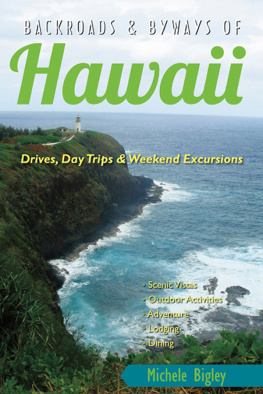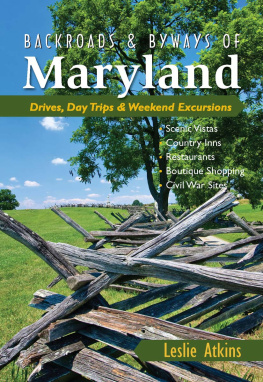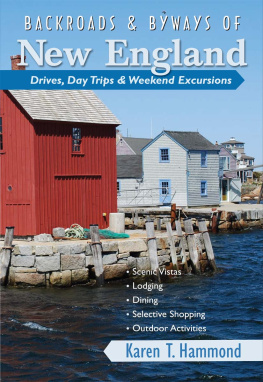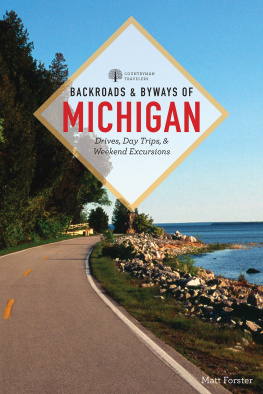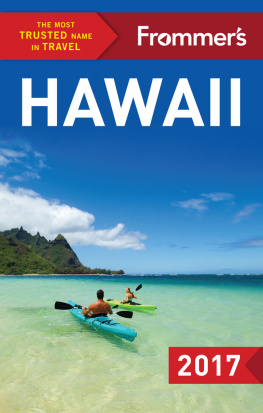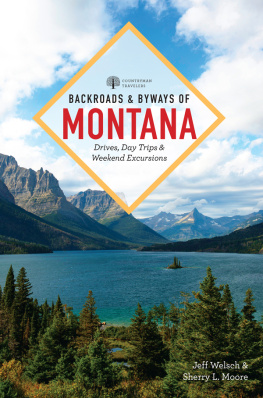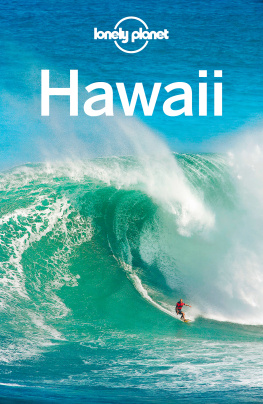

Copyright 2014 by Michele Bigley
All rights reserved. No part of this book may be reproduced in any form or by any electronic or mechanical means including information storage and retrieval systems without permission in writing from the publisher, except by a reviewer, who may quote brief passages.
Interior photographs by the author unless otherwise specified
Frontispiece photo: Kauais North Shore
Maps by Erin Greb Cartography, The Countryman Press
Book design by Susan Livingston
Composition by Chelsea Cloeter
Published by The Countryman Press,
P.O. Box 748, Woodstock, VT 05091
Distributed by W. W. Norton & Company, Inc.,
500 Fifth Avenue, New York, NY 10110
Printed in the United States of America
Backroads & Byways of Hawaii
ISBN 978-1-581-57184-4
ISBN 978-1-581-57724-2 (e-book)
FOR EDDIE, KAI, AND NIKKO, MY OHANA. YOU ARE LOVED.

The Na Pali Coast


On Mauis road to Hana
ACKNOWLEDGMENTS
M any mahalos are necessary for the wealth of generous people who helped birth this gigantic project. First and foremost, a big dollop of appreciation goes out to Kermit Hummell, Lisa Sacks, Doug Yeager, Laura Jorstad, and the entire Countryman Press crew for believing in the need for a responsible travel guide to the state of Hawaii. Humble thanks to Kim Grant for being a mentor since day one.
This book could not have been possible without the wisdom and guidance of those who offered insight throughout the research and writing. The following people deserve many mahalos: Nathan Kam, Emele Freiberg, Kelii Brown, Alicia Yoshikami, Lindsay Chambers, Joanna Blume, Dania Katz, the guys behind Beat of Hawaii, Kelley Cho, Noreen Kam, Daniela Powers, Rosemary and Norbert Smith, Carol Fowler, Don Hill, Beverly Clemente, Elizabeth Ferrer, Tom Corson-Knowles, Bonnie Friedman, Yvonne Biegel, Joelle Keller, Marilyn Jansen Lopes, James McDonald, Charity Texeira, Roxanne Darling, Bob Bone, Roxanne Murayama, Julie Bicoy, Bree Dallwitz, Paul Garcia, Calee Brean, Andrea Oka, Michelle Edwards, Carlton Kramer, Kim Markham, Jane Flandez, Lono, Dusty Grable, Candy Aluli, Lisa Reasoner, Lori Michimoto, and the hundreds of other people whom I may not have listed, but whose aloha helped create these pages.
Deep appreciation goes out to Carrie Kellerby, Lindsay Barels, and the amazing Rachel Edgar for pulling through at the last minute with those tedious details. Coralissa and Ivan Delaforce, you always inspire me; much aloha is coming at you! Mom, Dad, Baba, Ali, Andrea, and my amazing cadre of friends and family have helped in myriad ways, and for this I thank you with all my heart.
Kai and Nikko, I am so proud of my little world travelers for visiting all the Hawaiian Islands with me and placing your stamp of approval on almost every destination, even the spooky ones. You help me view my favorite state with new eyes, laughing through challenging travel days. I appreciate every moment I get to experience the world with you.
And to Eddie, my love, thank you for embarking with me on yet another wild journey. Once again you helped me pull it offwithout you, nothing would be possible.

Canoe plants like these taro thrive in Hawaii.
INTRODUCTION
N owhere else on the planet evokes as many visions of grandeur as the Hawaiian Islands. Charmed with so many of the planets bestsfrom beaches to waterfalls, hiking trails to campsites, lava flows to restaurants, luxury resorts to hidden hideawaysHawaii attracts not only those on the prowl for a tropical vacation, but also the intrepid travelers on the prowl for adventure.
Historically, Hawaii has been luring visitors since its creation. Polynesians arrived somewhere between a.d. 500 and 800, bringing along in double-hulled canoes a battery of breadfruit (to make surfboards, sandpaper, and instruments), coconut, bananas, taro, ti, sweet potatoes, sugarcane, plus chickens, pigs, and rats. These plants and animals thrived on the islands and quickly became synonymous with the environment. For the next thousand years, the Polynesians lived off the islands resources, believing that the land was chief and the humans were the servants. They saw themselves as part of, not separate from, nature. And though they used trees to make everything from canoes to spoons, weapons to sandpaper, houses to clothing, they would only use one tree at a time for fear of angering the spirit god that resided in the forest. In fact, every time they cut down a tree from the upland sacred forest, they made a human sacrifice.
The Polynesians also implemented a new belief system to worship four major gods: Ku (the god of war, ancestors, sunrise, and fishing), Lono (god of rain, harvest, fertility, and peace), Kane (who created the first man), and Kanaloa (ruler of the underworld). The chief ruler also started the kapu system, which set up a unified set of laws (most of which applied to commoners and were punishable by death). They also created heiaus (sacred houses of worship) and the caste system, where people were divided into four categories: Alii (royalty), Kapuna (high priests), Makaainana (commoners), and Kauwa (outcasts). People were born into a caste and could not move freely between these categories.
THE AUMAKUA By Lilly Barels
L ong before missionaries introduced their concept of God to Hawaii, Polynesians believed in a nature-based spiritual system. A family of deities called aumakua were prayed to and summoned for protection and comfort. These deities were the spirits of ancestors manifesting as sacred earth dwellers like the shark, sea turtle, octopus, eel, caterpillar, and owl. Its common to hear modern stories like one of a local canoe paddler who evaded danger because of guidance from his shark aumakua. When visiting the islands, it is important to understand where the deep respect comes from for these seemingly ordinary creatures of land and sea.
In the late 1700s, in sailed Captain Cook. Believing he was the god Lono returning on a floating island, the Hawaiians canoed out to the ships with an abundance of offerings. This proved a fateful turning point in Hawaiian history. Not only did Cook and his crew trade iron, weaponry, and nails for sweet potatoes and fish, but they also left a scar on the pure Hawaiian population: a nasty bout of syphilis.
Leaving weapons and sickly people behind, Cook and his crew took off for the Arctic, dubbing the friendly islands to the south the Sandwich Islands, to honor his patron the Earl of Sandwich. However, the weather forced Cook to turn back, and he returned to the Big Island. Once again the sailors received a warm welcome, filled with the finest foods and women. But soon the people suspected this farm boy wasnt a god (since the pious didnt actually

